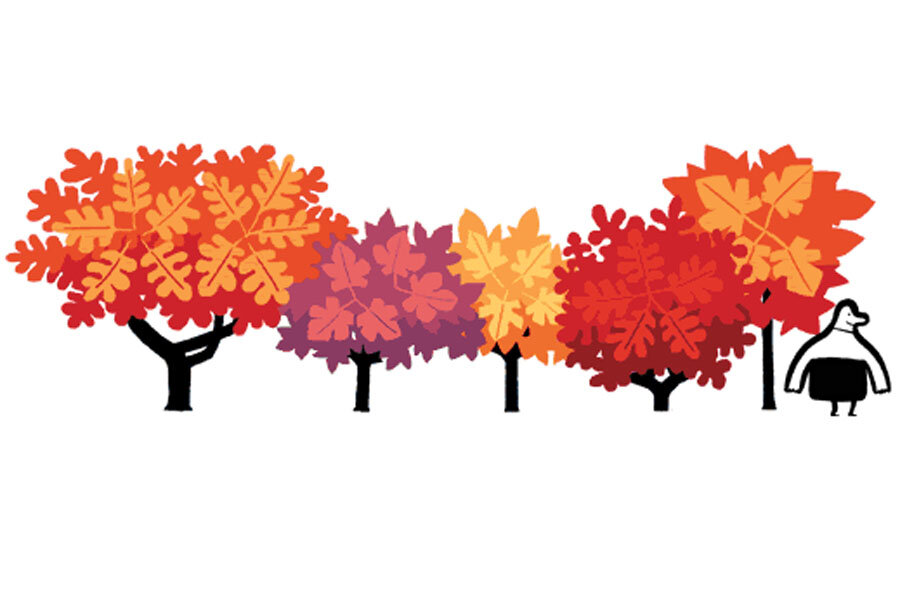First day of autumn: Isn't this Google Doodle a day late?
Loading...
Google rolled out its latest doodle Tuesday. The illustrated romp through the woods celebrates foliage changing color and fall sweeping in. But why did Google post this doodle on September 23? Isn't the first day of autumn on September 22?
Yes and no.
Fall gets ushered in each year by a phenomenon called the autumnal equinox. Between March and September, the sun spends most of the day shining on the Northern Hemisphere. Come late September, the Earth's tilt shifts enough that the sun starts favoring the Southern Hemisphere. This explains why days are longer in the spring and summer compared with the colder months. But there's a moment when the sun shines directly on the equator, letting both hemispheres enjoy 12 hours of daylight and 12 hours of darkness. We call this an equinox.
Astronomically speaking, the equinox is not a full day but a specific moment. This year, the autumnal equinox occurred at exactly 10:29 p.m. Eastern Time on Monday. So there's your answer: The first day of fall is September 22.
But, wait! When the clock strikes 10:29 p.m. on Monday in New York, it's already early Tuesday morning in London. Yes, you can blame the confusion on time zones.
Officially, this year's autumnal equinox occurred at 2:29 a.m. Universal Time (the modern version of Greenwich Mean Time) on September 23, which likely explains Google's thinking. While Google is an American company, it's a global power run by scientifically-minded people.
This problem does not pop up every year. During most years, the September equinox occurs on the same day in the Eastern time zone as in Universal time zone. But this awkward split did happen in 2001 and 2010 – and will happen again in 2018, according to TimeAndDate.com.
But, for now, happy second day of fall to everyone in the United States. If you're curious about why we celebrate the equinox, Monitor writer Noelle Swan looked into the history of the phenomenon, from Stonehenge in the United Kingdom to El Castillo in Mexico.
For more on how technology intersects daily life, follow Chris on Twitter @venturenaut.







